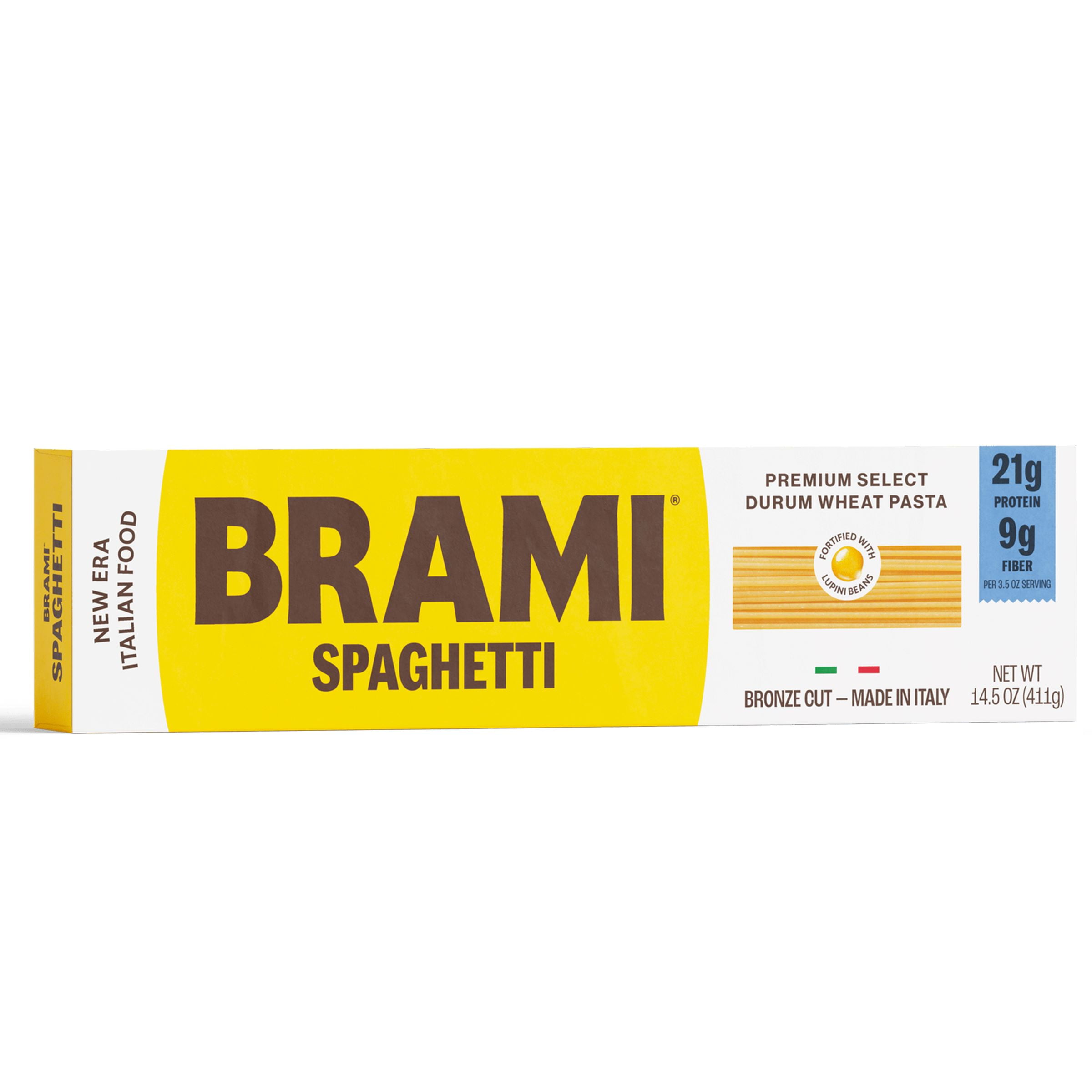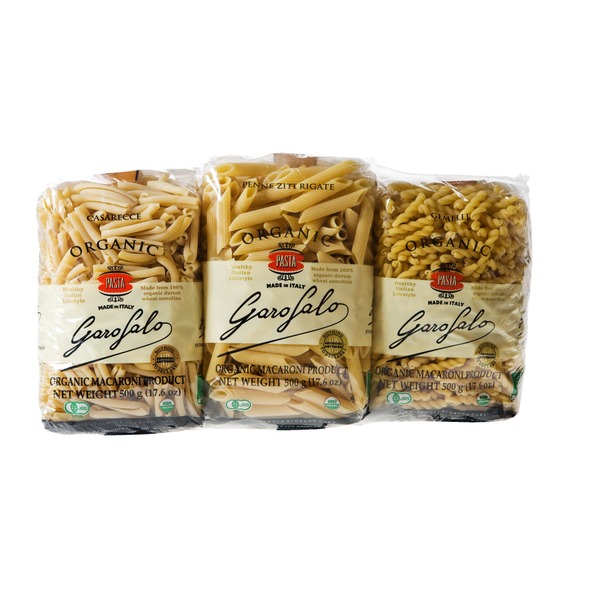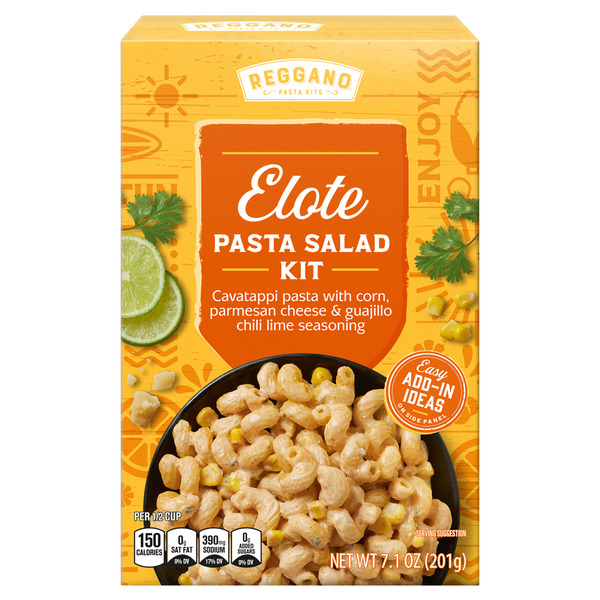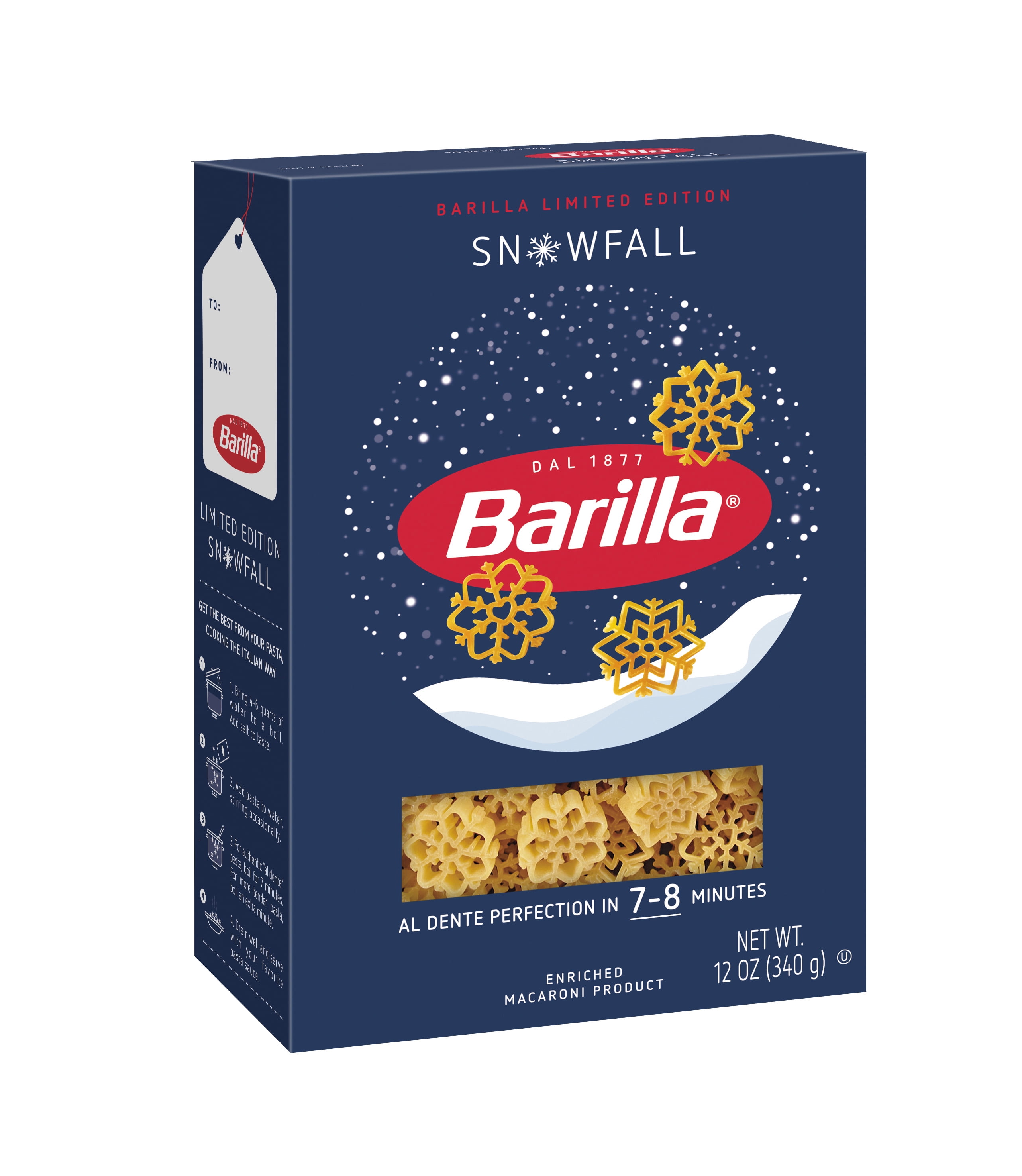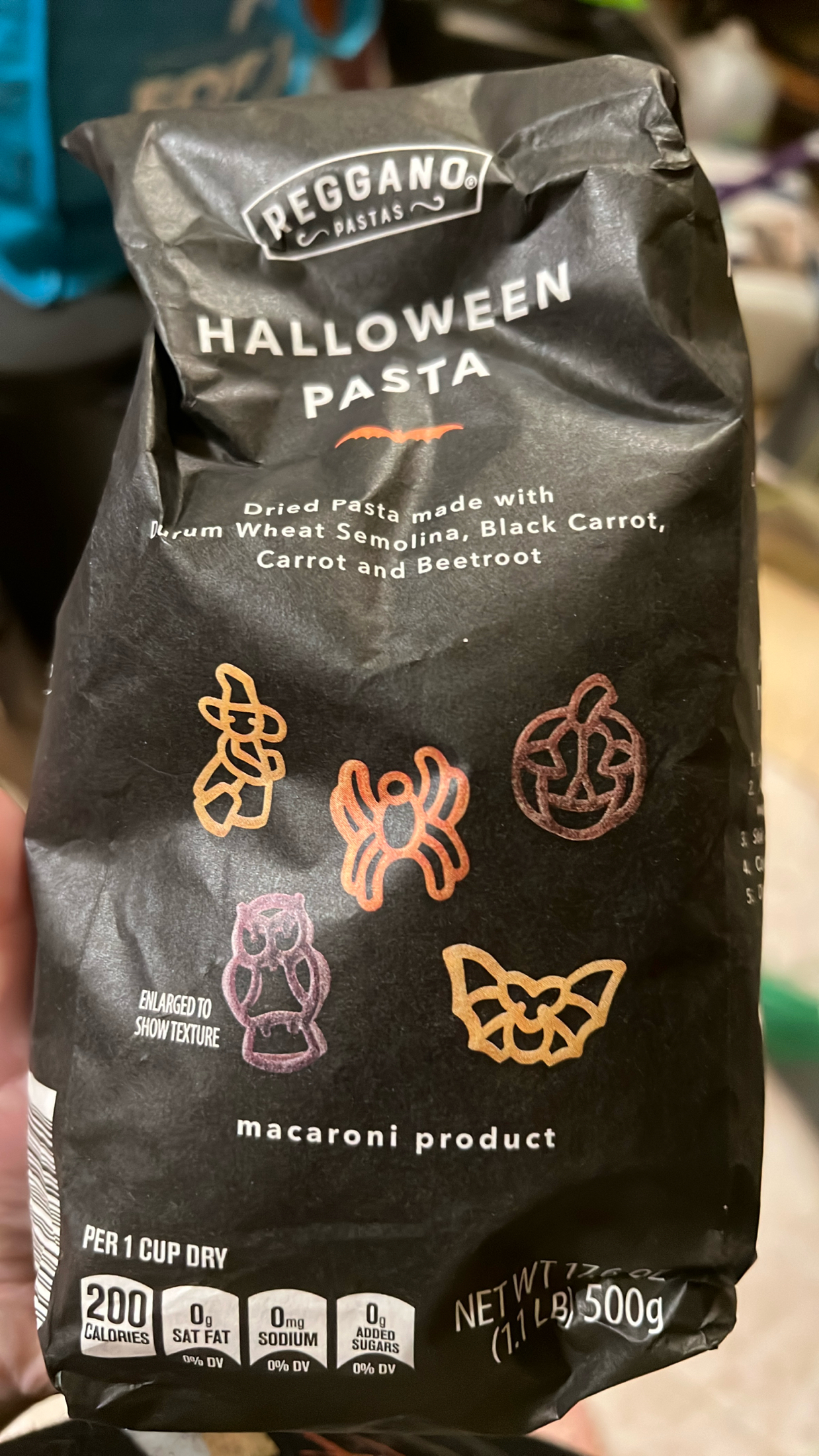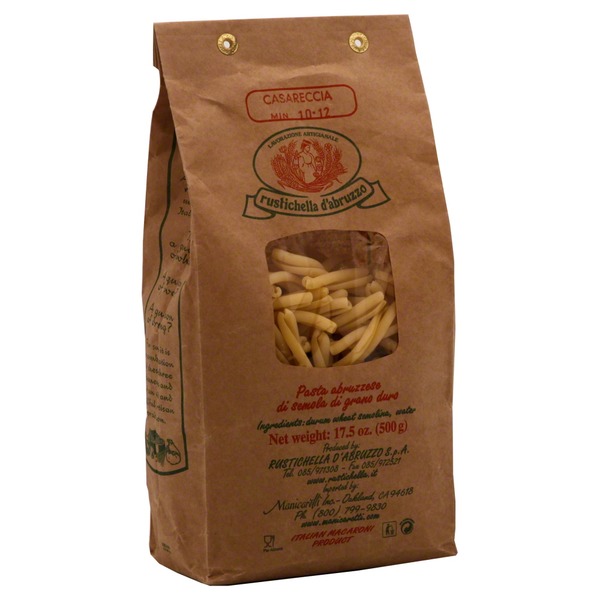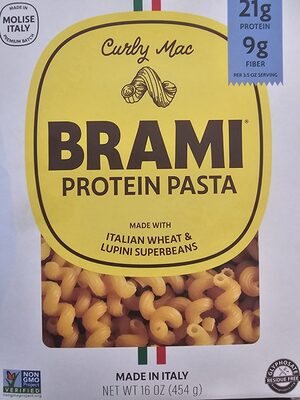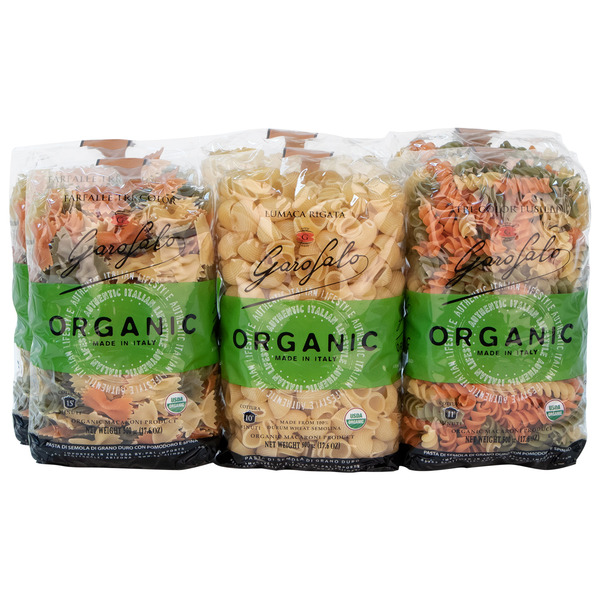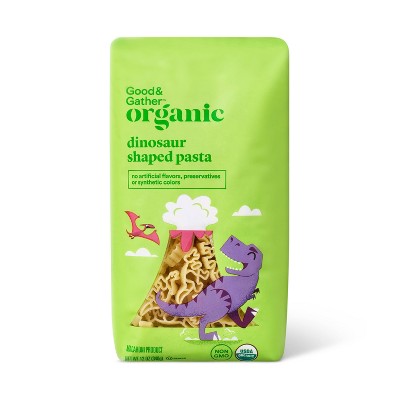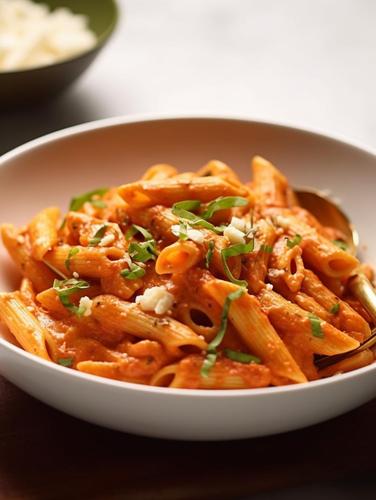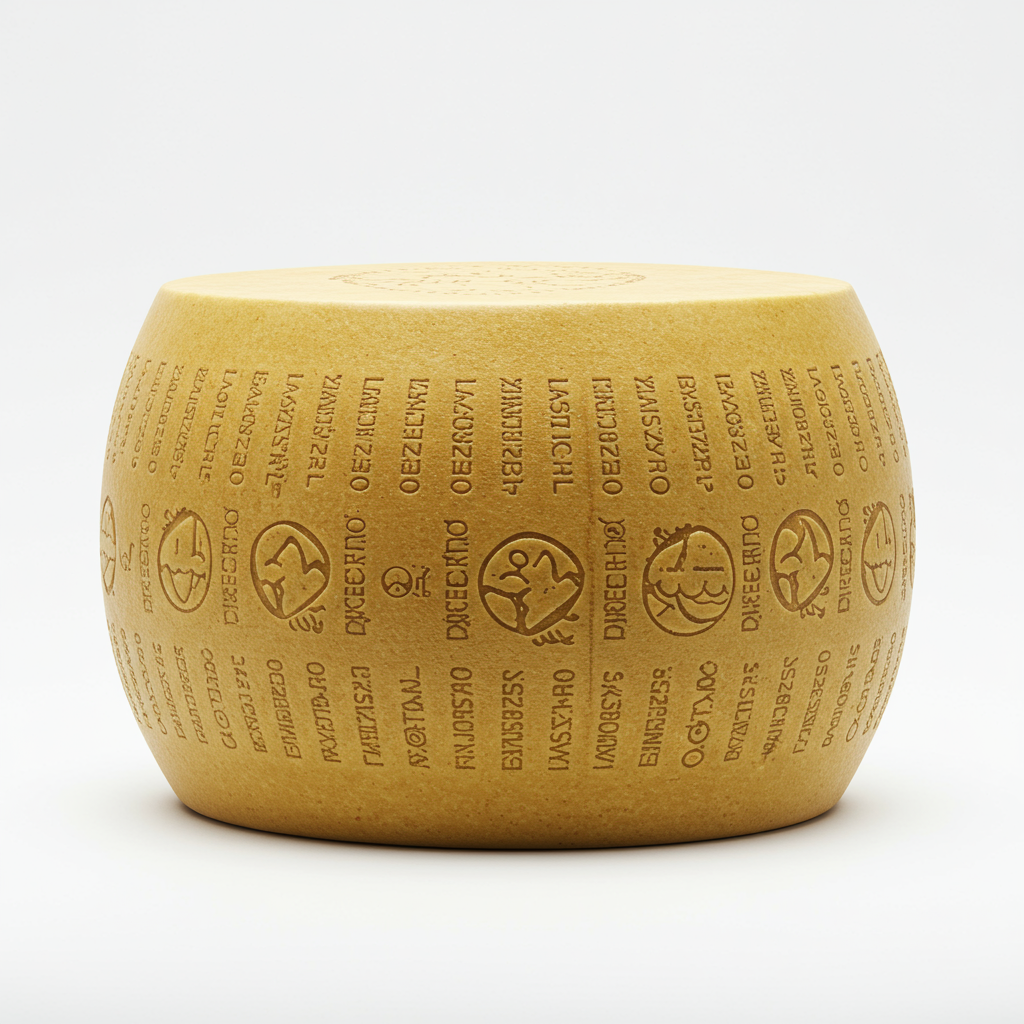MAIN DISHES
SIDE DISHES
SOUPS
Dry Pasta
Pasta noodles are a staple food of Italian cuisine, made from unleavened dough consisting of wheat flour and water, sometimes enriched with eggs. These noodles are available in various shapes and sizes, such as spaghetti, fettuccine, penne, and farfalle. The diverse range of shapes enables versatile culinary applications, making pasta a popular choice worldwide as a base for dishes with sauces, meats, and vegetables.
For home cooks and consumers, pasta is generally easy and quick to prepare by boiling in salted water until al dente or according to the manufacturer's instructions. Due to their neutral taste, pasta noodles provide a canvas for different flavors, making them suitable for various sauces and recipes, from classic marinara and Alfredo to more inventive combinations.
84%
CARBS
2%
FAT
14%
PROTEIN
2,653 Dry Pasta Products
Brami Spaghetti Italian Protein Pasta, Low Carb, High Fiber, Made in Italy, Non-GMO, Fortified with Heart Healthy Lupini Beans, Shelf-Stable
Garofalo Organic Pasta Variety Pack, 6 ct
Elote pasta salad - Reggano
Barilla Classic Non-GMO, Kosher Certified Snowfall Pasta
Barilla Love Heart-Shaped Pasta
Halloween Pasta
Rustichella d'Abruzzo Casareccia
Brami Protein Pasta
Garofalo Summer Variety Pack Pasta, 6 pk
Dinosaur Shaped Organic Kids' Pasta
Used In 237 Recipes
2
Cheesy Pasta O's in Creamy Tomato Sauce
4
Sensational Garlic Shrimp Scampi
6
Savory Chicken Apple Sausage & Pasta Skillet
1
Luscious Lemon Chicken Piccata
4
Pasta with Quick Cherry Tomato Burst Sauce
2
Creamy Garlic Chicken Orzo
1
Quick and Hearty Sloppy Joe Pasta Bake
3
Creamy Tomato and Goat Cheese Pasta
Dry Pasta Is Frequently Used With
Dry Pasta FAQ
Dry pasta is a versatile and easy-to-cook ingredient staple found in kitchens worldwide. However, it’s important to remember that not all pasta is created equal. To maximize the flavour and texture of your pasta, opt for high quality, Italian-made products.
One of the most common difficulties people face with pasta is achieving the perfect 'al dente' texture. This is critical, as overcooked pasta can get mushy, and undercooked pasta is hard and unappealing. The term al dente means 'to the tooth,' which implies that the pasta should be cooked enough to be edible but retain some firmness.
Another common mistake is not using enough water or salt when cooking pasta. Pasta needs plenty of space to move around in the pot to cook evenly and prevent stickiness. The water should taste slightly salty to improve the pasta's flavor as it cooks.
Remember not to rinse your pasta after cooking, except in exceptional circumstances (like making a pasta salad). Rinsing removes the starch that helps the sauce adhere to the pasta.
Making sure to save and use the pasta water can hugely enhance the dish too. The starchy pasta water often helps thicken the sauce and allows it to stick better to the pasta.
For maximum flavor, always ensure you are matching the right pasta shape with the right sauce. Fine, light pastas like angel hair or thin spaghetti are best with light, thin sauces. Heavier, chunky pasta shapes like penne and rigatoni pair well with heavier sauces.
How much pasta should I cook per person?
How much water do I need to cook pasta?
How much salt should I add to the pasta water?
What does 'al dente' mean?
Why shouldn't I rinse my pasta after cooking?
Should I add oil to my pasta while it's cooking?
How can I prevent my pasta from sticking together?
Why should I save some pasta water?
How do I choose the best pasta for my recipe?
What is the difference between fresh and dry pasta?
Expiration & Storage Tips
When does pasta noodles expire?
Pasta noodles are known for their long shelf life. When stored properly, dry pasta noodles in an unopened package can last for one to two years past the printed date on the package. Once the package is opened, dry pasta can keep for up to one year in a cool, dark, and dry cupboard. As for cooked pasta, it lasts 3-5 days in the fridge, and up to two months in the freezer.
How do you tell if pasta noodles is bad?
Dry pasta is rather hard to spoil, but if it does, you'll notice a change in the texture and color. It might develop a powdery texture or visible mold over time. Also, when you cook the pasta, it might give off an off smell or could become sticky. Cooked pasta, when spoiled, usually has a foul smell or may look slimy. Any noticeable change in color, smell or texture, should raise suspicion about its freshness.
Tips for storing pasta noodles to extend shelf life
• To maximize the shelf life of dry pasta, keep it in a cool, dark cupboard in an airtight container or original packaging once opened.
• Cooked pasta can be stored in airtight containers in the fridge. Let the pasta cool down a bit before storing, but don't let it sit for too long at room temperature as bacteria can multiply rapidly.
• When freezing cooked pasta, toss it with a little oil or butter to prevent it from sticking together. Then, pack it in airtight freezer bags or freezer-safe containers. To defrost, place it in the fridge for several hours or directly reheat it. You can use a microwave or add it directly into a simmering sauce.
EXPIRES WITHIN
19 - 29
MONTHS
Equivalents
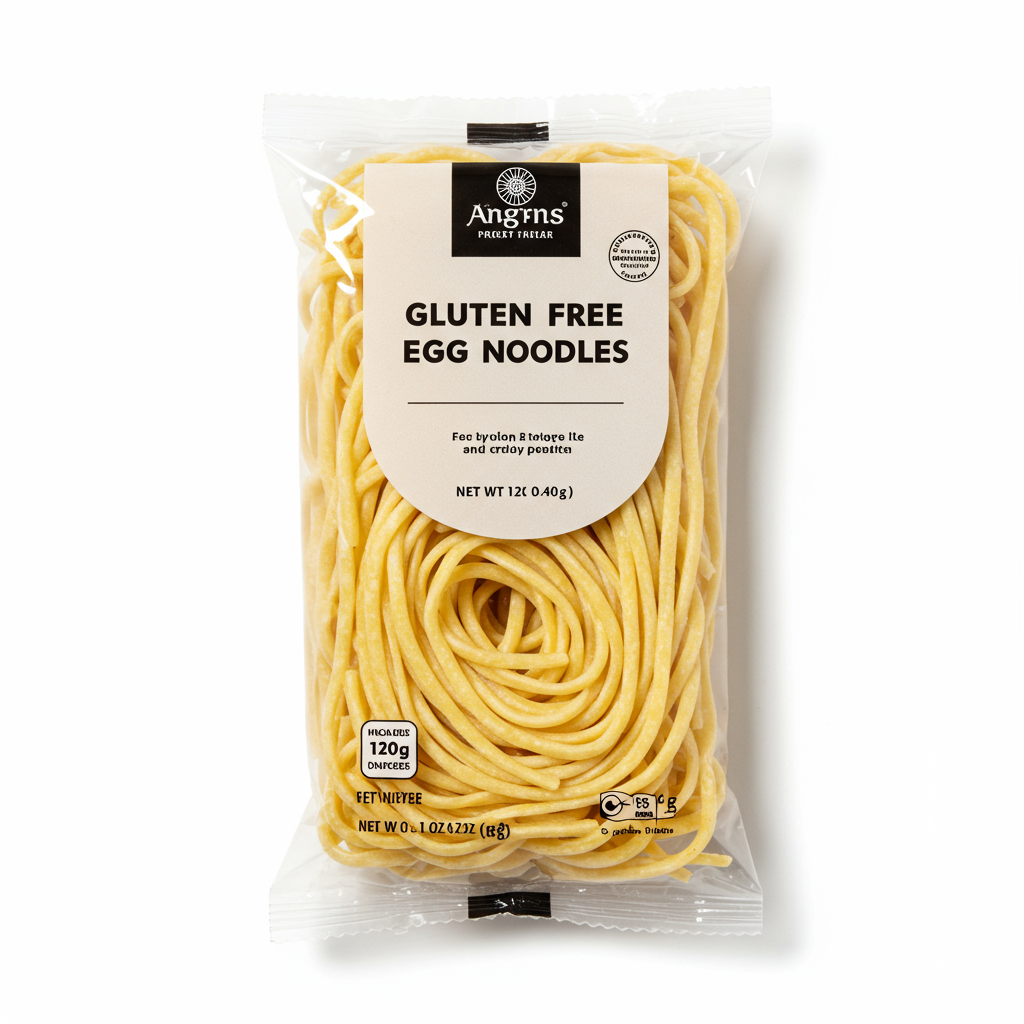
Gluten Free Egg Noodles

Egg White Noodle

Extra Wide Egg Noodles
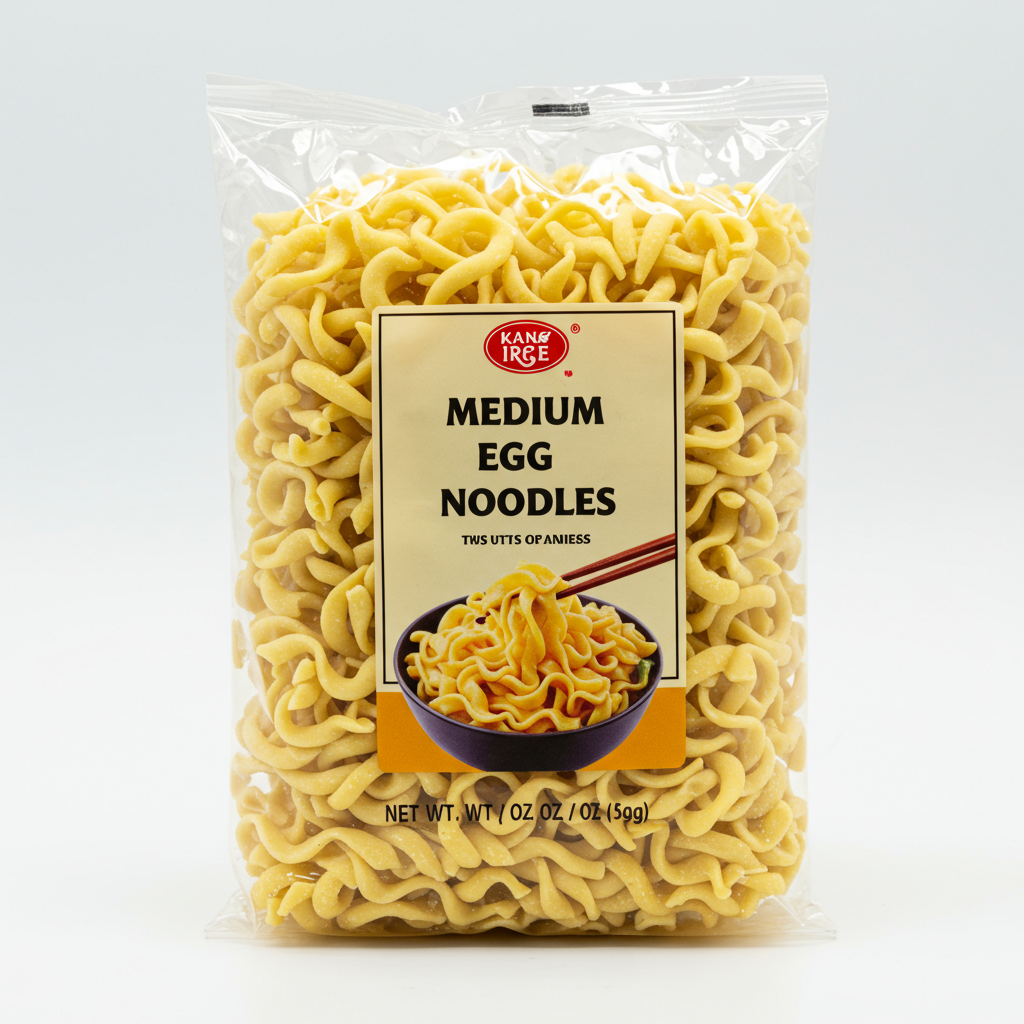
Medium Egg Noodles

Mostaccioli Pasta

Wide Egg Noodle

Angel Hair Pasta

Riccioli Pasta

Rigatoni

Rotelle Pasta

Rotini

Shell Pasta

Pipette Pasta
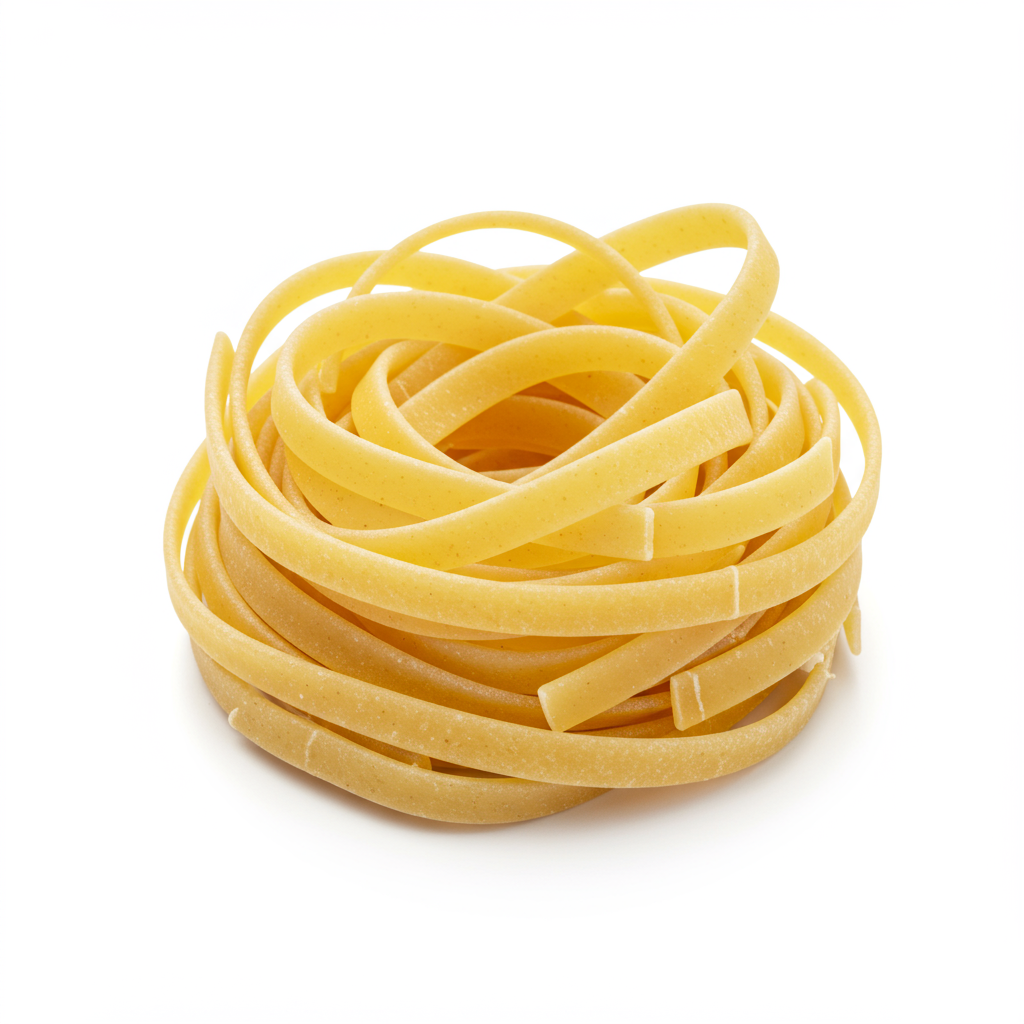
Gluten Free Fettuccine Pasta

Gluten Free Linguine
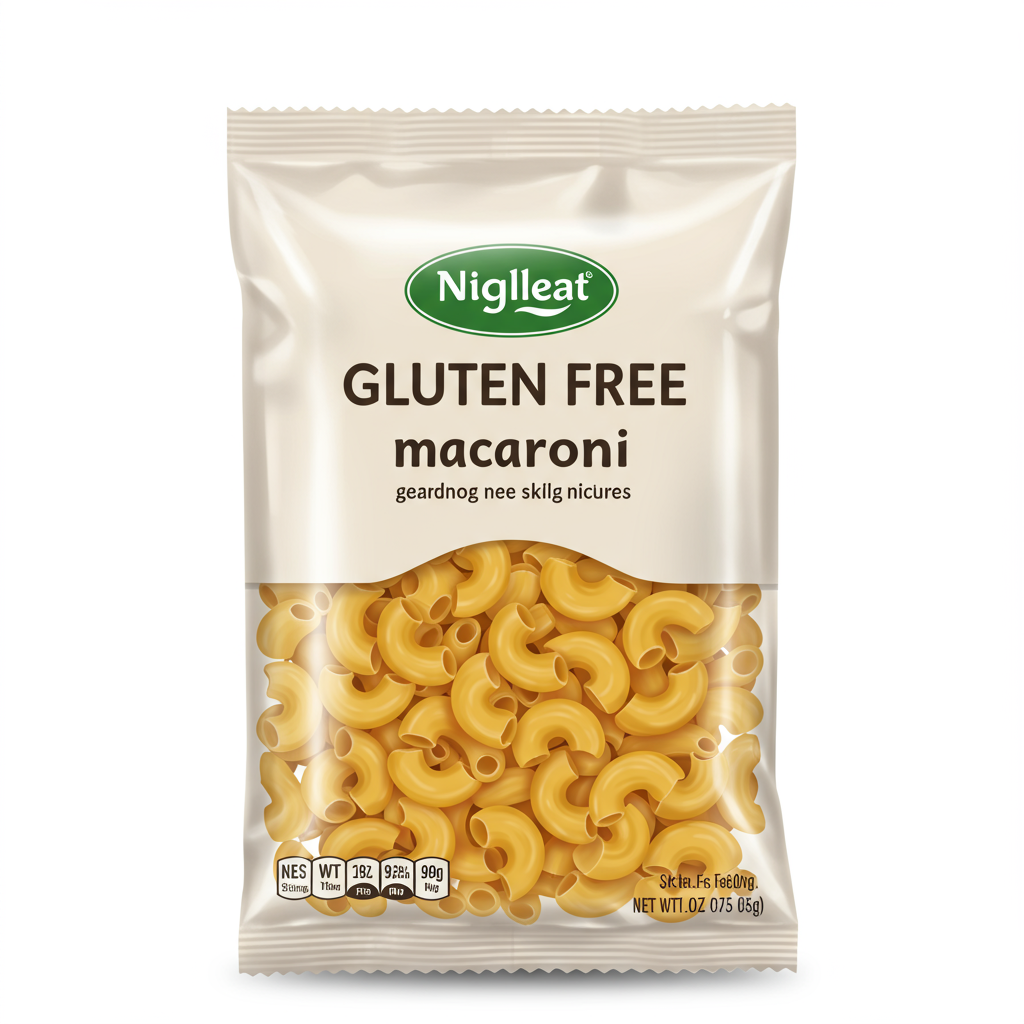
Gluten Free Macaroni

Gluten Free Penne Pasta

Spaghetti

Tagliatelle Pasta

Thin Spaghetti

Vermicelli

Gluten Free Rigatoni

Gluten Free Spaghetti

Gluten Free Spiral Pasta

Ziti Pasta

Bucatini Pasta

Campanelle Pasta

Casarecce Pasta

Cavatappi Pasta
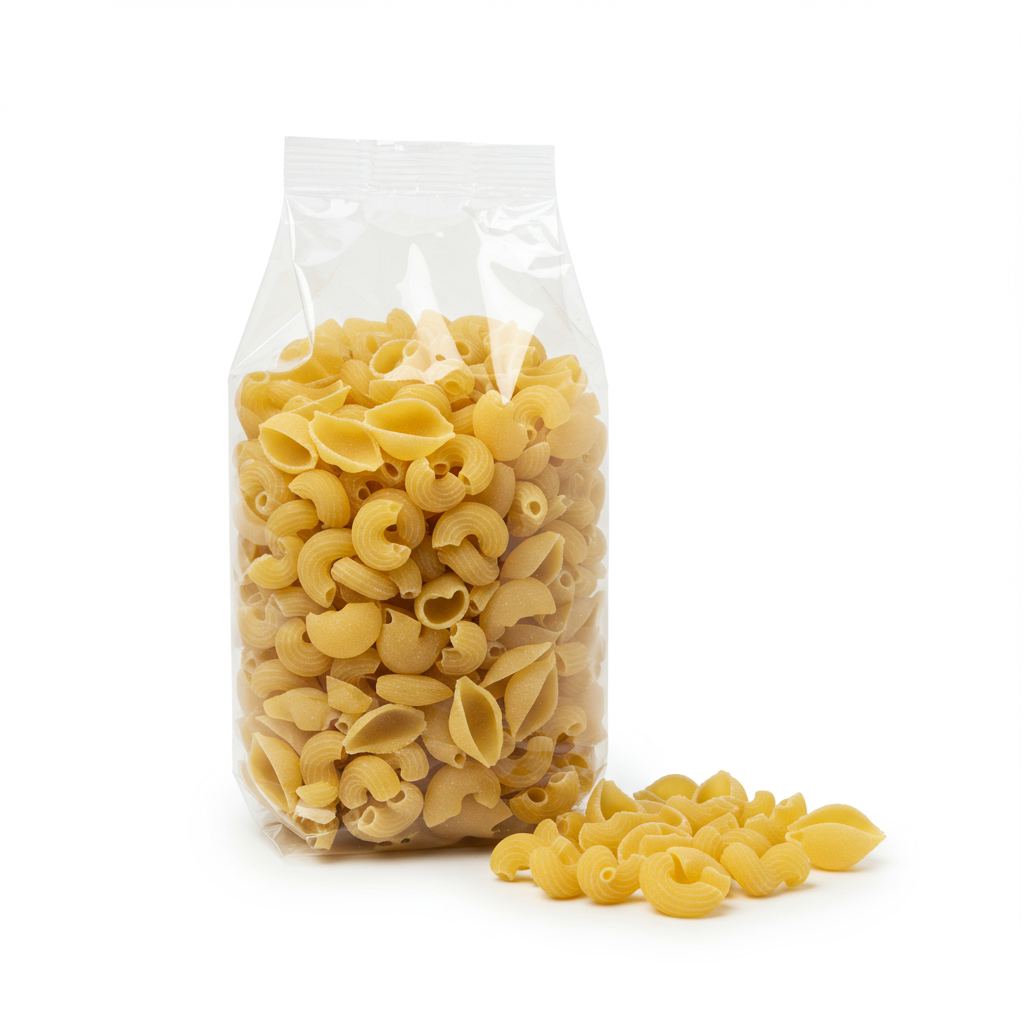
Cavatelli Pasta

Farfalle Pasta

Fettuccine Pasta

Fusilli Pasta

Gemelli Pasta

Girelle Pasta

Linguine

Macaroni
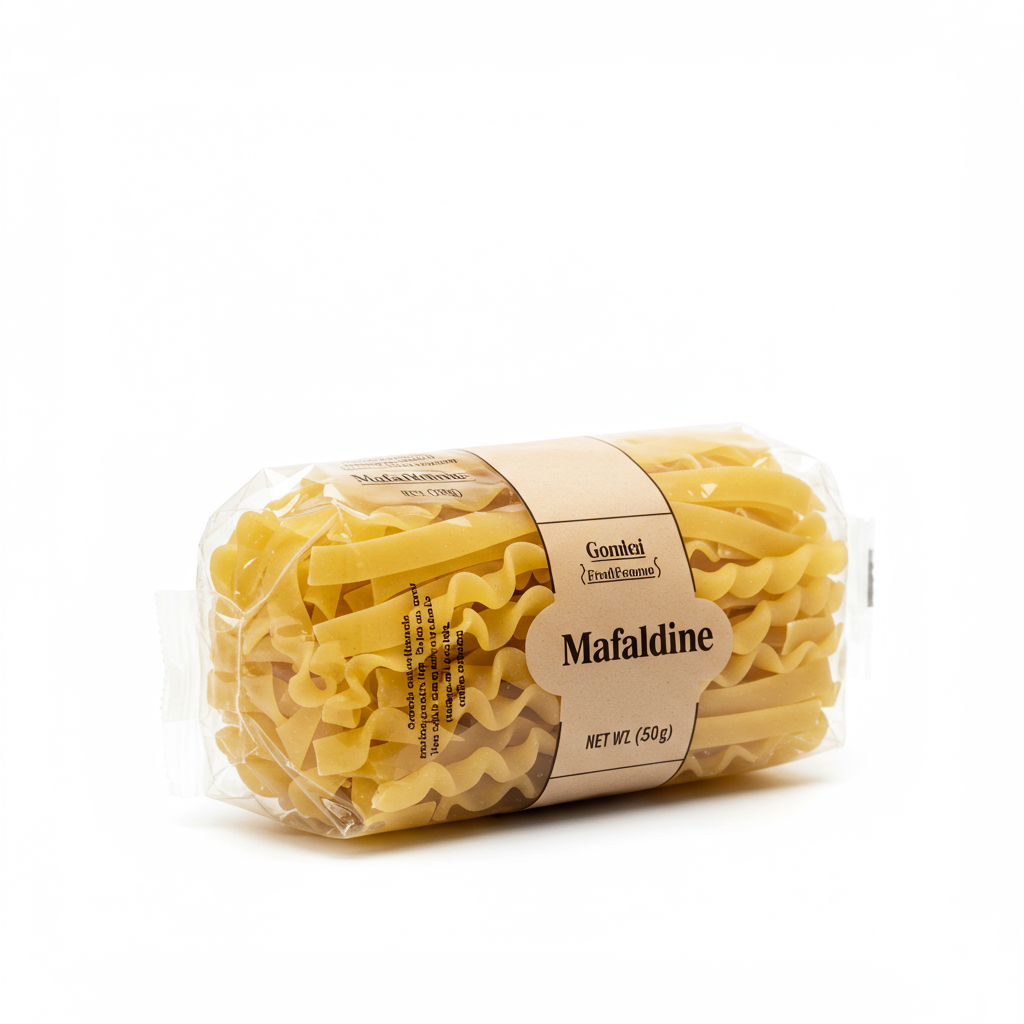
Mafaldine Pasta

Orecchiette

Paccheri Rigati Pasta

Pappardelle

Penne Pasta
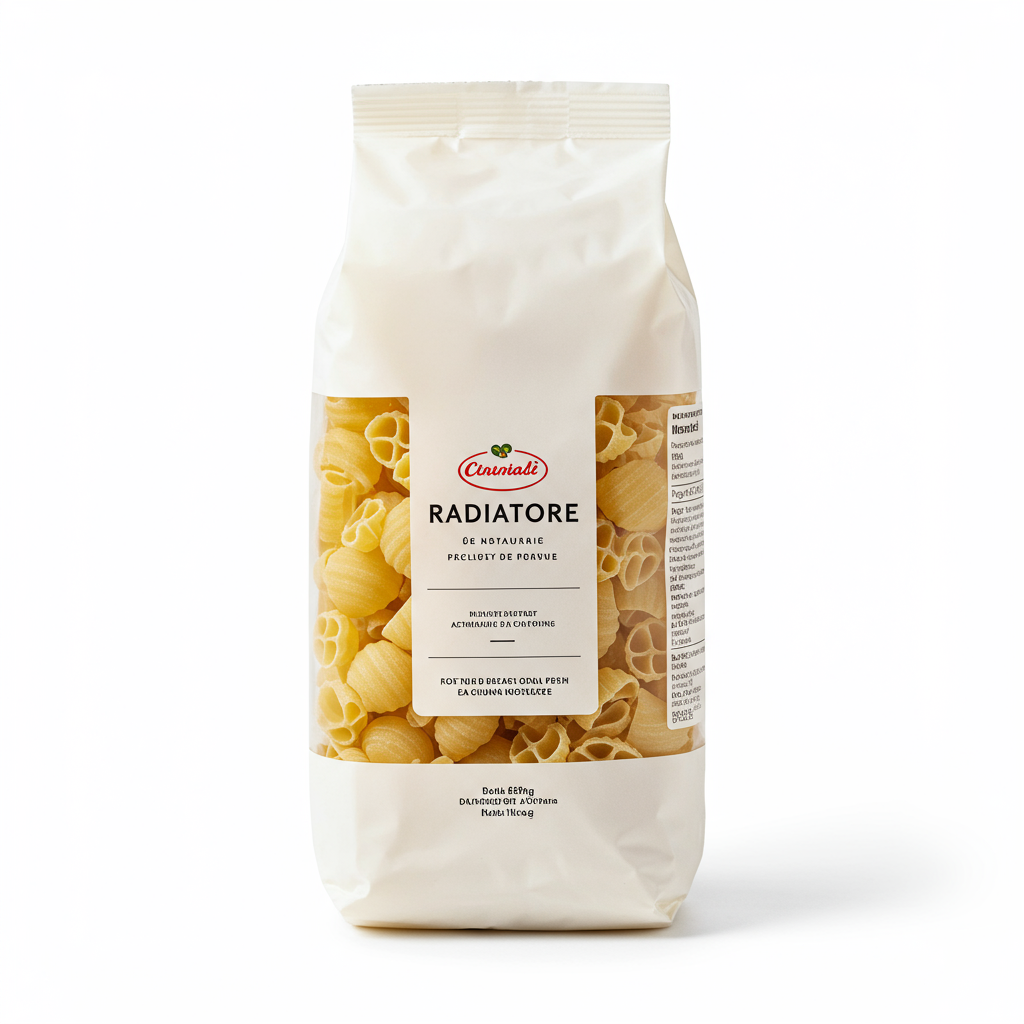
Radiatore Pasta
Substitutes
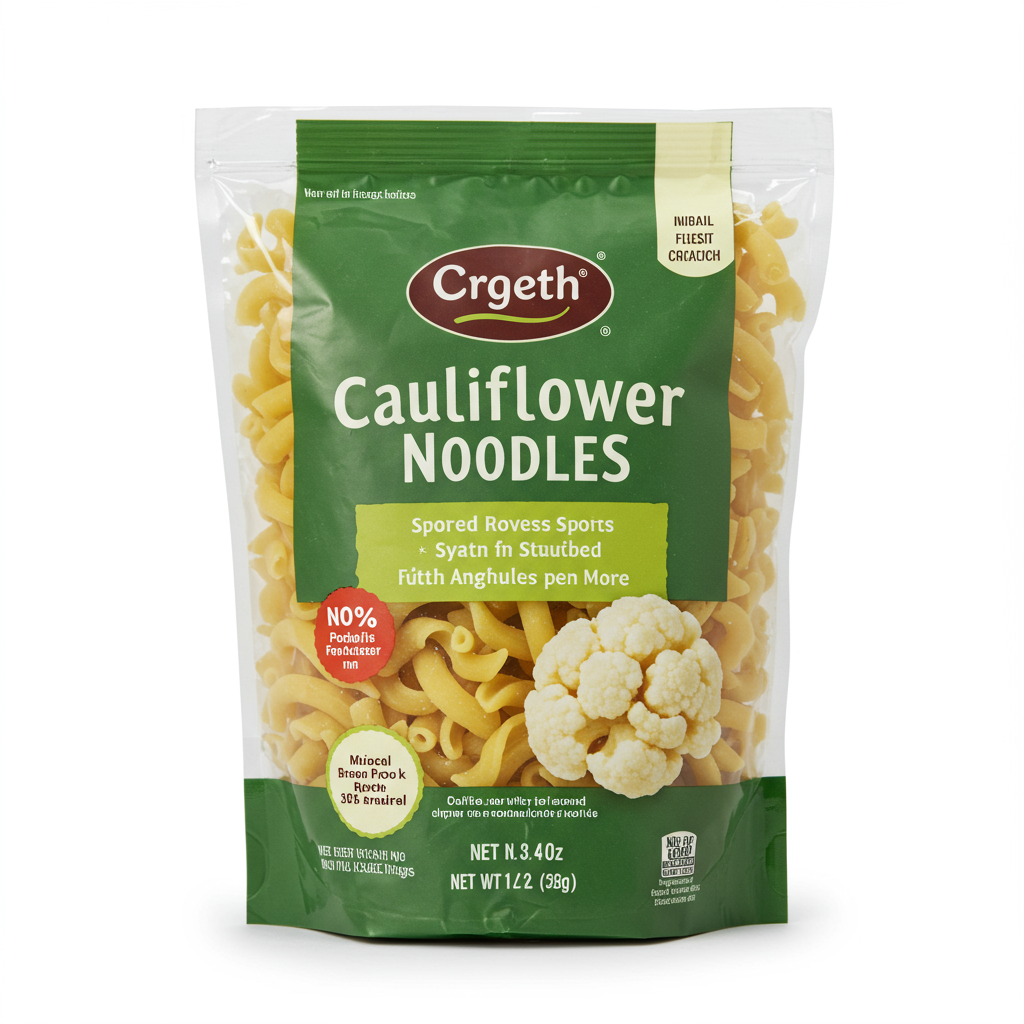
Cauliflower Pasta Noodle

Brown Rice & Quinoa Fusilli

Brown Rice Spaghetti
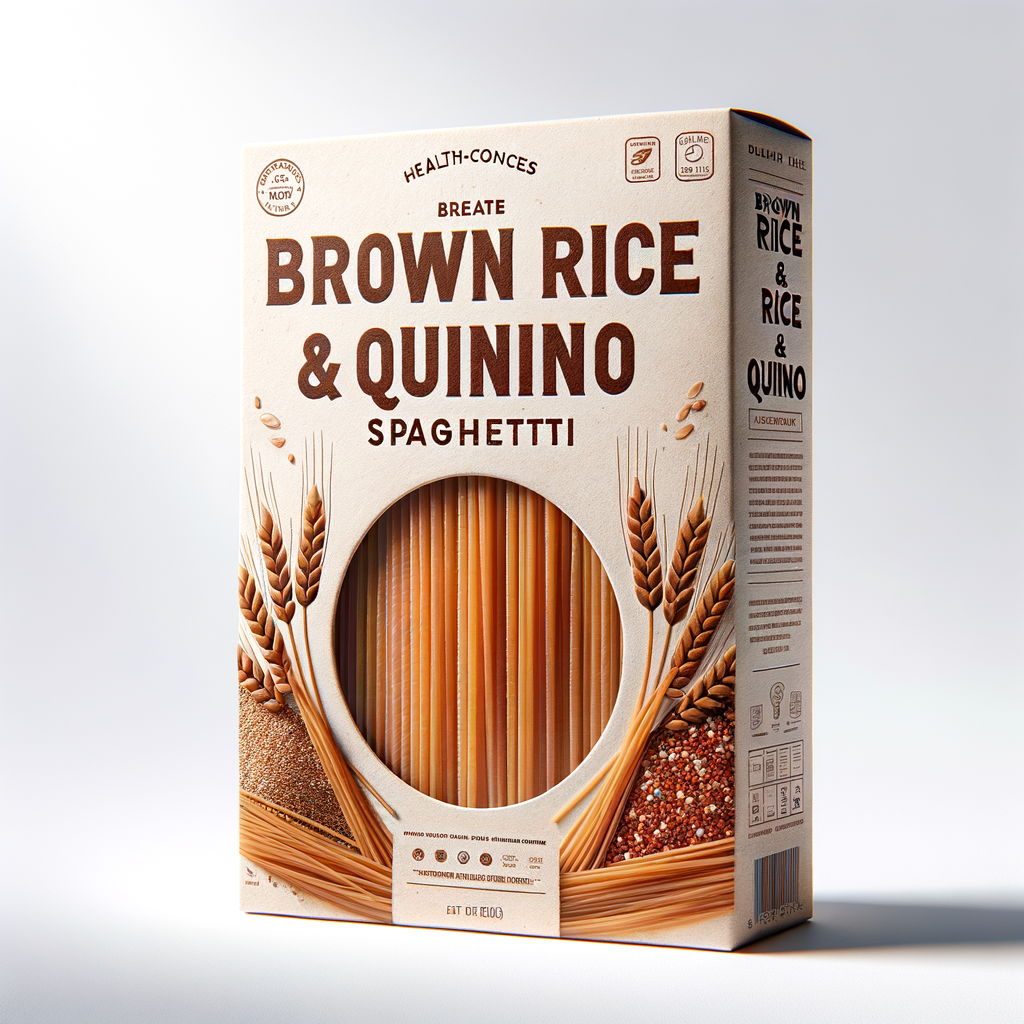
Rice & Quinoa Spaghetti
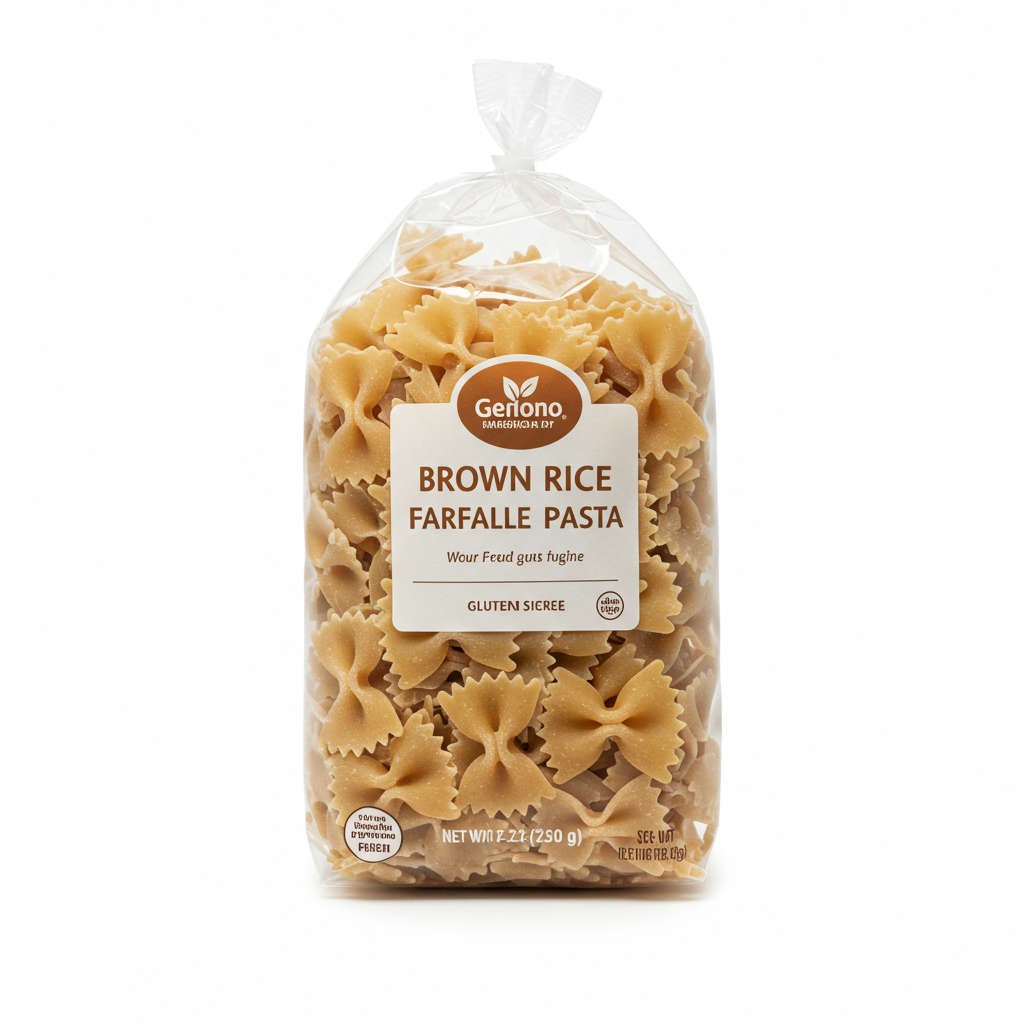
Brown Rice Farfalle Pasta
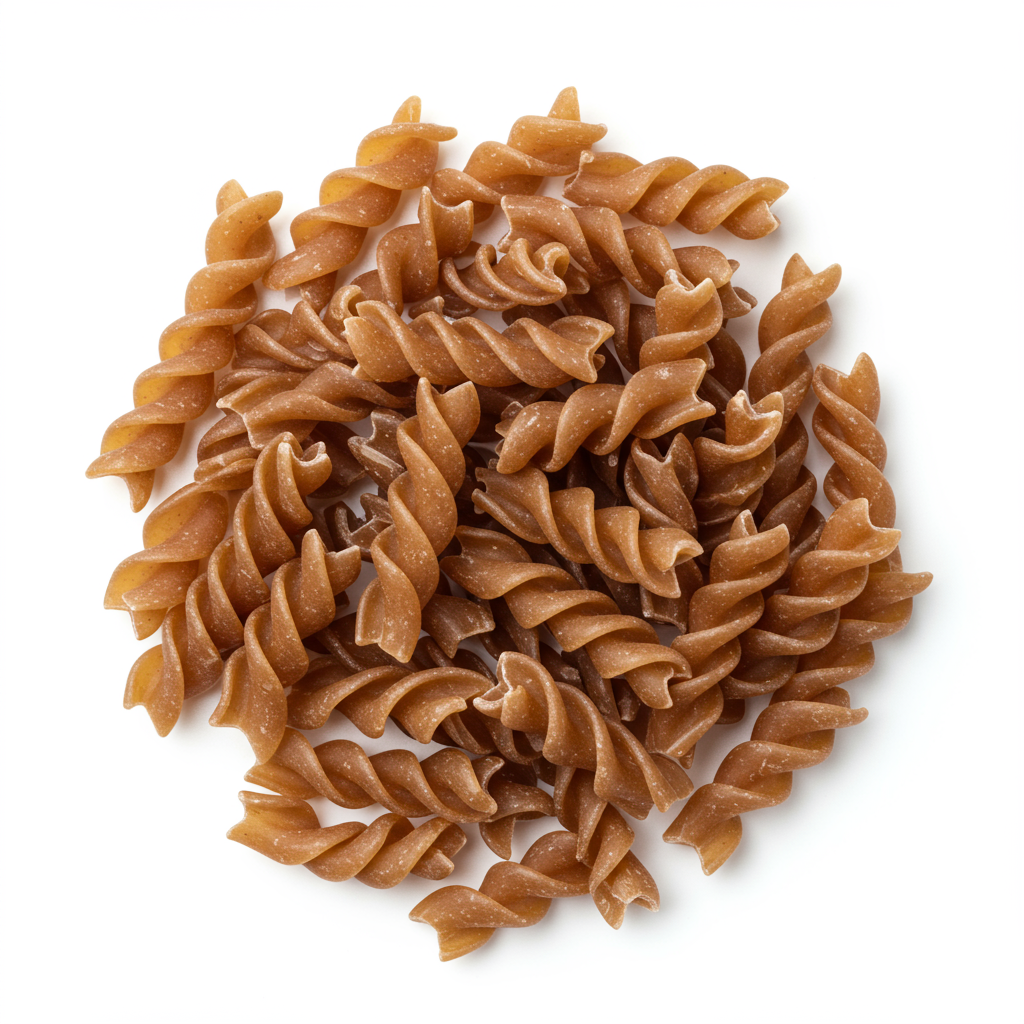
Brown Rice Fusilli Pasta

Brown Rice Macaroni

Whole Grain Fettuccine Pasta
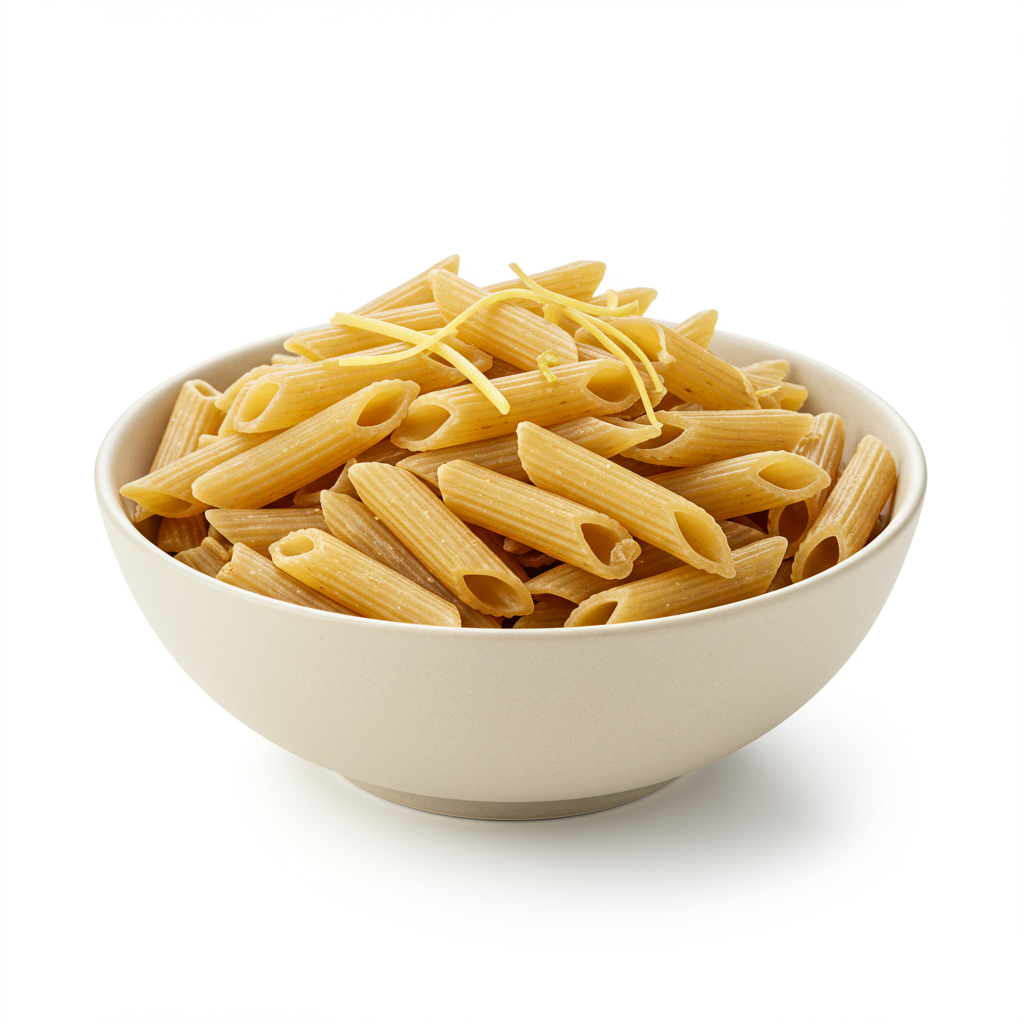
Brown Rice Penne Pasta

Whole Grain Rotini
See All
Health Info
Macros
41g
CARBS
1g
FAT
7g
PROTEIN
Allowed on these diets
LOW FAT
HIGH CALCIUM
VEGETARIAN
VEGAN
LACTOSE FREE
Contains these allergens
WHEAT

